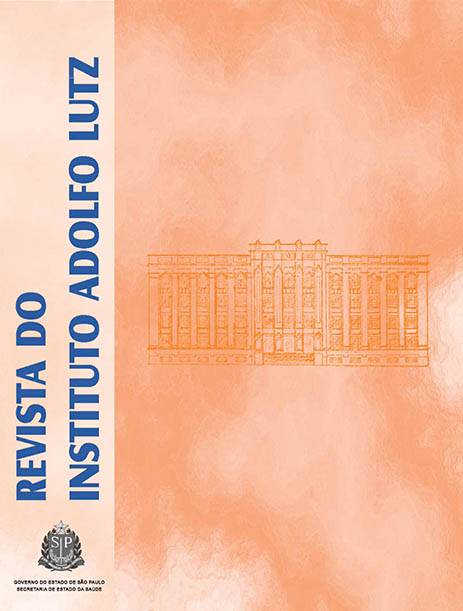Abstract
The oil from cutia nut (Couepia edulis) was extracted by cold pressure, and it was physical-chemically characterized by standard analytical methods for oils and fats. This work evaluated: the free fatty acids contents; acid, peroxide, iodine, saponification, and refraction index values; and the unsaponifiable fractions. The oxidative stability was determined by using Rancimat equipment, and fatty acid profile by gas chromatography and proton nuclear magnetic resonance spectroscopy (1H NMR). The analysis of tocopherols composition was performed by high efficiency liquid chromatography, and the total phenolic compounds by spectrophotometry. Being a cold-pressed oil, the results of free fatty acid and peroxide confirmed the stability of the pressed samples, as the process did not cause effect on the oil quality. As for the fatty acid chemical composition, we found a high percentage of unsaturated fatty acids, approximately 52.78%, and the occurrence of conjugated fatty acids. Also, the oil showed a relevant total phenolic compound content. It means that it constitutes a viable source of α-and γ-tocopherols. Being a source of bioactive compounds, there is a favorable outlook for using the oil of cotia nut as a raw material for chemical and pharmaceutical industries.References
1. Day L, Seymour RB, Pitts KF, Konczak I, Lundin L. Incorporation of functional ingredients into foods. Trends Food Sci Technol. 2009;20(9):388-95.
2. Parry J, Su L, Luther M, Zhou K, Yurawecz MP, Whittaker P, Yu L. Fatty acid composition and antioxidant properties of cold-pressed marionberry, boysenberry, red raspberry, and blueberry seed oils. J Agric Food Chem. 2005;53(3):566-73.
3. Alasalvar C, Shahidi F. Tree nuts: composition, phytochemicals and health effects. Boca Raton: CRC Press; 2008.
4. Adhikari P, Hwang KT, Shin MK, Lee BK, Kim SK, Kim SY, Lee KT, Kim SZ. Tocols in caneberry seed oils. Food Chem. 2008;111:687-90.
5. Yang J. Brazil nuts and associated health benefits: a review. Food Sci Tecnol. 2009;42:1573-80.
6. Huber LS, Hoffmann-Ribani R, Rodriguez-Amaya DB. Quantitative variation in Brazilian vegetable sources of flavonols and flavones. Food Chem. 2009;113:1278-82.
7. Hung PV, Maeda T, Miyatake K, Morita N. Total phenolic compounds and antioxidant capacity of wheat graded flours by polishing method. Food Res Int. 2009;42:185-90.
8. Nogueira RC, Cerqueira HF, Soares MBP. Patenting bioactive molecules from biodiversity: the Brazilian experience. Expert Opin Ther Pat. 2010;20(2):1-13.
9. Pessoa JDC, Leeuwen JV. Development of a shelling method to recover whole kernels of the cutia nut (Couepia edulis). Rev Bras Frutic. 2006;28(2):236-9.
10. Leandro RC, Yuyama K. Enraizamento de estacas de castanha-de-cutia com uso de ácido indolbutírico. Acta Amazon. 2008;38(4):597-602.
11. AOCS. American Oil Chemists’ Society. Official and tentative methods of the American Oil Chemists’ Society: including additions and revisions. 6. ed.Champaign: AOCS; 2009.
12. Rossell JB. Classical analysis of oils and fats. In: Hamilton RJ, Rossell JB, organizadores. Analysis of oils and fats. Londres: Elsevier Applied Science; 1986. p. 1-90.
13. Kornsteiner M, Wagner KH, Elmadfa I. Tocopherols and total phenolics in 10 different nut types. Food Chem. 2006;98(2):381-7.
14. Singleton VL, Rossi JAJr. Colorimetry of total phenolics with phosphomolybdic-phosphotungstic acid reagents.Am J Enol Vitic. 1965;16(3):144-58.
15. Brasil. Agência Nacional de Vigilância Sanitária. Resolução RDC n. 270, de 22 de setembro de 2005. Aprova o regulamento técnico para óleos vegetais, gorduras vegetais e creme vegetal. Diário Oficial [da] República Federativa do Brasil. Brasília, DF, 23 set 2005.
16. Codex Alimentarius Commission. Codex-Stan 210: codex standard for named vegetable oils. Roma: FAO/WHO Food Standards; 2009.
17. Ferreira ES, Silveira CS, Lucien VG, Amaral AS. Caracterização físico-química da amêndoa, torta e composição dos ácidos graxos majoritários do óleo bruto da castanha-do-brasil (Bertholletia excelsa H.B.K.). Aliment Nutr. 2006;17(2):203-8.
18. Queiroga Neto V, Bora PS, Diniz ZN, Cavalheiro JMO, Queiroga KF. Dipteryx lacunifera seed oil: characterization and thermal stability. Cien Agrotec. 2009;33(6):1601-7.
19. Vanhanen LP, Savage GP. The use of peroxide value as a measure of quality for walnut flour stored at five different temperatures using three different types of packaging. Food Chem. 2006;99:64-9.
20. Chaves MH, Barbosa AS, Moita Neto JM, Aued-Pimentel S, Lago JHG. Caracterização química do óleo da amêndoa de Sterculia striata ST. HIL. ET NAUD. Quim Nova. 2004;27(3):404-8.
21. Arain S, Sherazi STH, Bhanger MI, Talpur FN, Mahesar SA. Oxidative stability assessment of Bauhinia purpurea seed oil in comparison to two conventional vegetable oils by differential scanning calorimetry and Rancimat methods. Thermochim Acta. 2009;484(1-2):1-3.
22. Amaral JS, Casal S, Pereira JA, Seabra RM, Oliveira BPP. Determination of sterol and fatty acid compositions, oxidative stability, and nutritional value of six walnut (Juglans regia L.) cultivars grown in Portugal. J Agric Food Chem. 2003;51(26):7698-702.
23. Luzia DMM, Bertanha BJ, Jorge N. Sementes de pitanga (Eugenia uniflora L.): potencial antioxidante e perfil de ácidos graxos. Rev Inst Adolfo Lutz. 2010;69(2):175-80.
24. Guillén MD, Ruiz A. High resolution 1H nuclear magnetic resonance in the study of edible oils and fats. Trends Food Sci Technol. 2001;12:328-38.
25. Spitzer V, Marx F, Maia JGS, Pfeilsticker K. Identification of conjugated fatty acids in the seed oil of Acioa edulis (Prance) syn. Couepia edulis (Chrysobalanaceae). J Am Oil Chem Soc. 1991;68:183-9.
26. Schmidt S, Pokorný J. Potential application of oilseeds as sources of antioxidants for food lipids: a review. Czech J Food Sci. 2005;23(3):93-102.
27. Siger A, Nogala-Kalucka M, Lampart-Szczapa E. The content and antioxidant activity of phenolic compounds in cold-pressed plant oils. J Food Lipids.2008;15(2):137-49.
28. Koski A, Psomiadou E, Tsimidou M, Hopia A, Kefalas P, Wähälä K, Heinonen M. Oxidative stability and minor constituents of virgin olive oil and cold-pressed rapeseed oil. Eur Food Res Technol. 2002;214(4):294-8.
29. Alasalvar C, Shahidi F. Natural antioxidants in tree nuts. Eur J Lipid Sci Technol. 2009;111(11):1056-62.

This work is licensed under a Creative Commons Attribution 4.0 International License.
Copyright (c) 2012 Instituto Adolfo Lutz Journal
